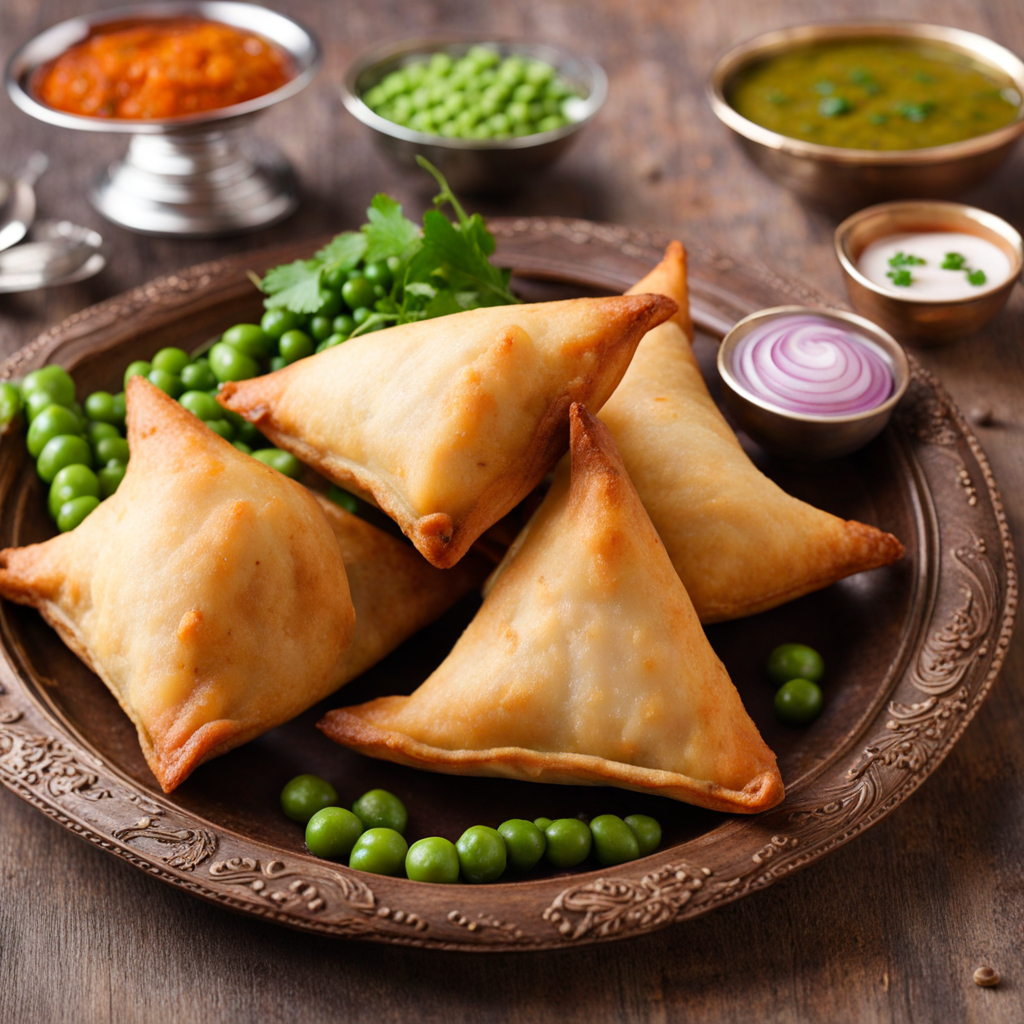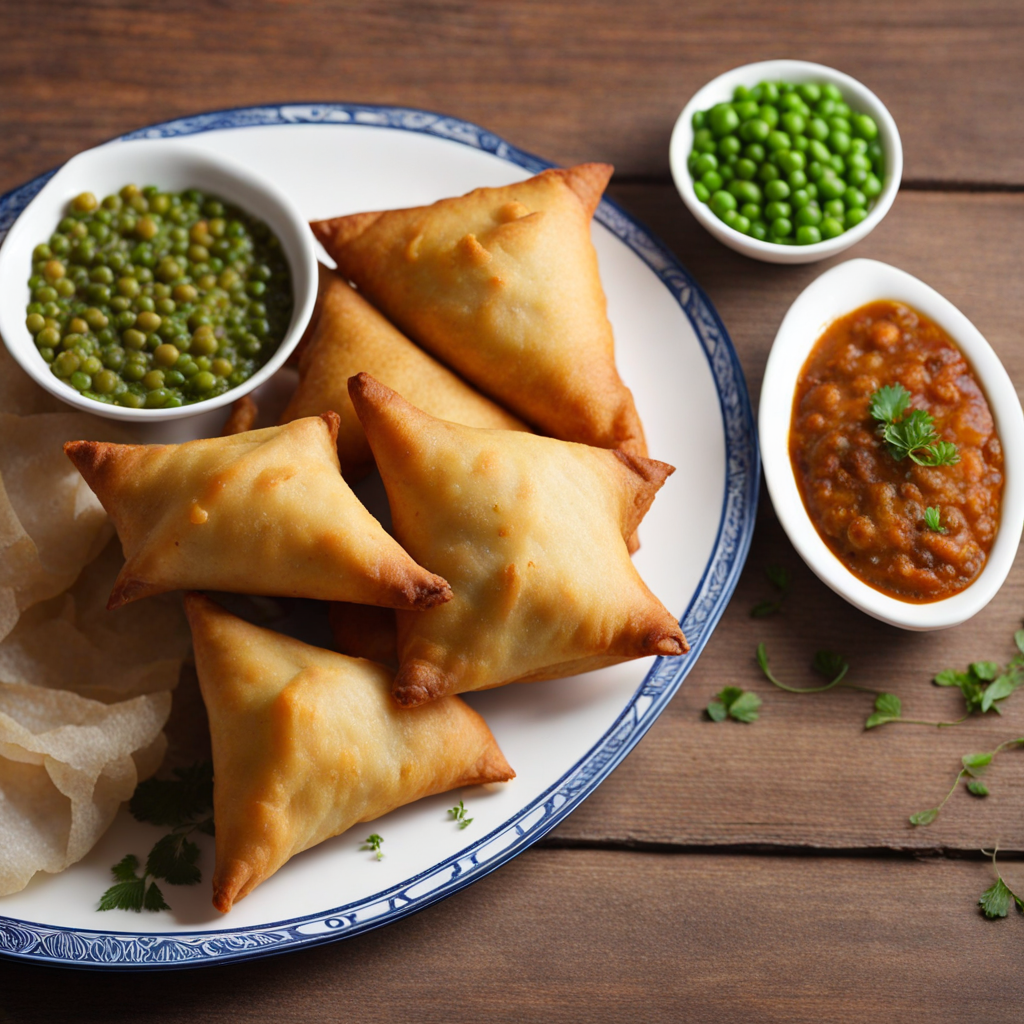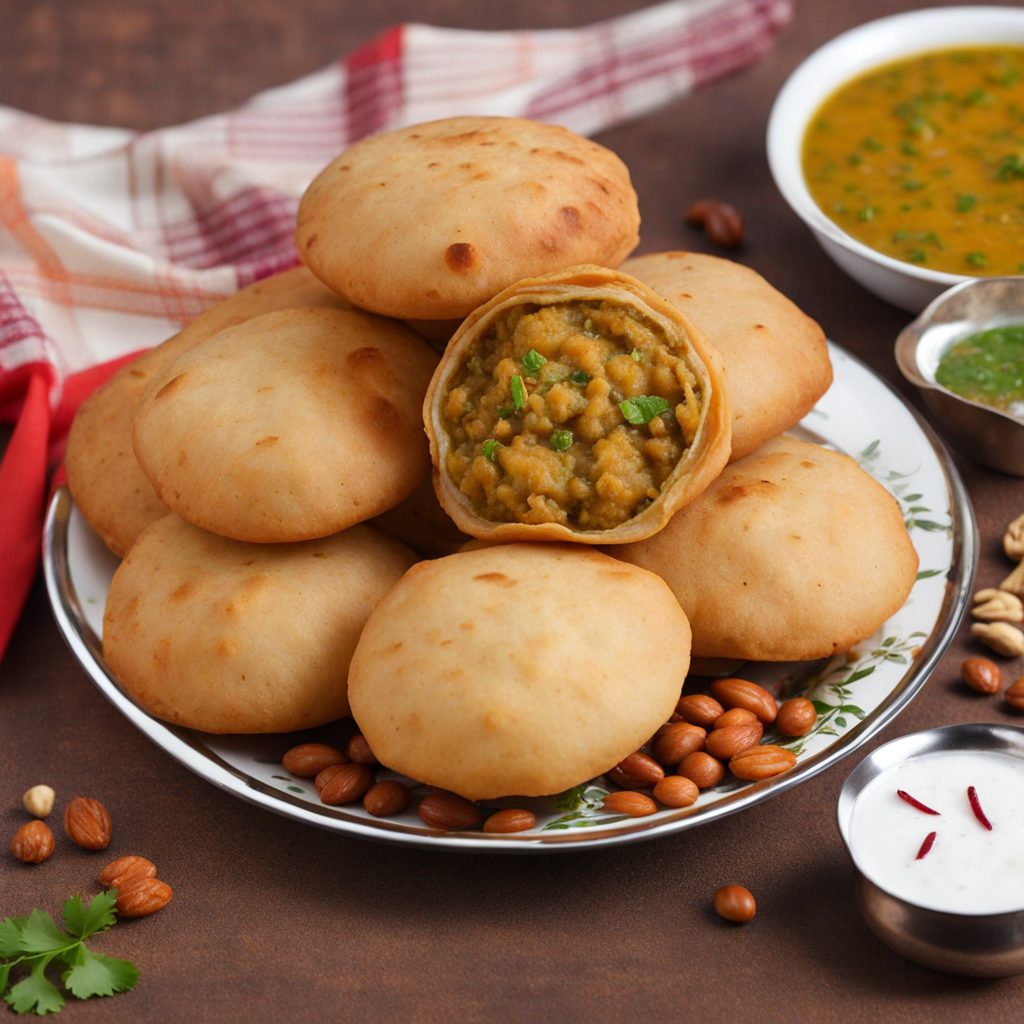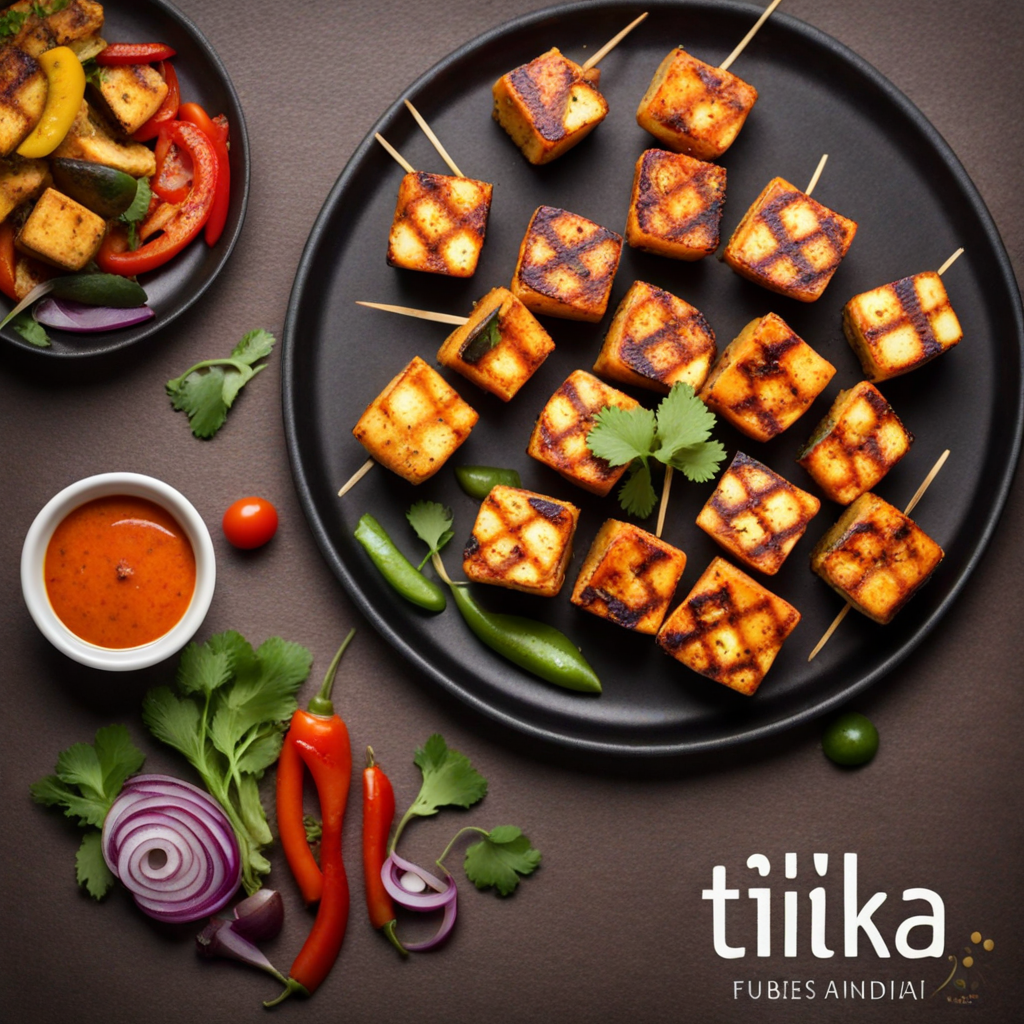Samosa
Samosa is a beloved Indian snack that tantalizes the taste buds with its delightful combination of flavors and textures. This deep-fried or baked pastry is typically shaped like a triangle, enclosing a spiced filling that can vary from potatoes and peas to lentils or minced meat. The outer layer is made from a simple dough of flour, which is rolled out thinly, then filled with the savory mixture before being sealed and fried to golden perfection. The crispiness of the outer shell provides a satisfying contrast to the soft and flavorful filling within, making each bite a delightful experience.
How It Became This Dish
The samosa, a beloved snack in Indian cuisine, boasts a rich history that intertwines culinary traditions across cultures and centuries. Its origins can be traced back to the Middle East, with some historians suggesting that the samosa evolved from a dish known as the asfar or sambusak, which was made with dough filled with meat and spices. The earliest records of this dish date back to the 10th century in the Arab world, where it was enjoyed by travelers and nomads due to its portability and ease of preparation. As trade routes expanded, the samosa made its way to the Indian subcontinent. By the 13th century, it had been adopted into Indian cuisine, especially in the northern regions. The Mughal Empire played a crucial role in popularizing the samosa in India. The Mughals, known for their love of rich and flavorful foods, incorporated the samosa into their royal banquets. The filling often included minced meat, spices, and herbs, wrapped in a flaky pastry, and deep-fried to golden perfection. This period marked the transformation of the samosa from a simple fare to a dish associated with luxury and celebration. The samosa's cultural significance extends beyond mere snacking; it is a symbol of hospitality and festivity in many Indian households. Traditionally served during festivals, weddings, and gatherings, the samosa has become a staple at celebrations, embodying the spirit of sharing and togetherness. In India, the samosa is often accompanied by a variety of chutneys, such as mint or tamarind, which enhance its flavor and provide a refreshing contrast to its spiciness. Over time, the samosa evolved to reflect regional tastes and preferences. In the northern states, particularly in Punjab, samosas are typically filled with spiced potatoes, peas, and occasionally, paneer. In contrast, the southern regions favor a slightly different approach, with variations like the madras samosa, which may include coconut and curry leaves. The diversity of fillings has led to an array of samosa types, catering to both vegetarian and non-vegetarian palates, making it a versatile dish that transcends cultural boundaries. In the 19th and early 20th centuries, the samosa gained further popularity as it became a common street food across Indian cities. Vendors would set up stalls in bustling markets, serving freshly made samosas to hungry customers. This shift marked a significant moment in the samosa's history, as it transformed into more than just a dish for the elite; it became accessible to the masses. The affordability and convenience of samosas made them a favorite snack for people from all walks of life, further embedding them into the fabric of Indian street food culture. With the rise of globalization and migration in the late 20th century, the samosa found its way beyond Indian borders, captivating taste buds around the world. In countries like the United Kingdom, the samosa has become a popular snack among the Indian diaspora and is often served at parties and events. It has also been embraced by local populations, leading to variations such as the cheese samosa or the chicken samosa, showcasing how the dish has adapted to different culinary landscapes. The samosa's presence in popular culture is noteworthy as well. It has made appearances in films, literature, and even advertisements, symbolizing comfort food and nostalgia. The phrase “samosa weather” has entered the lexicon, reflecting the association of the snack with cozy rainy days in India. This cultural resonance has only solidified the samosa's status as a cherished food item that evokes fond memories and communal experiences. In recent years, there has been a renewed interest in traditional foods, leading to a resurgence of artisanal samosa makers who focus on quality and authenticity. Some chefs have experimented with gourmet fillings, incorporating ingredients such as truffles or gourmet cheeses, while still honoring the samosa's heritage. This blending of traditional and modern techniques highlights the samosa's ability to evolve while retaining its core identity. Moreover, the samosa has found a place on international menus, often served at Indian restaurants around the globe. It is celebrated not only for its taste but also for its versatility, as it can be enjoyed as an appetizer, snack, or even a main course, depending on the setting. Food festivals and culinary events often showcase samosas, where chefs compete to create the most innovative versions, reinforcing its status as a beloved dish in contemporary cuisine. The samosa's journey is a testament to the power of food as a cultural connector. From its Middle Eastern roots to its establishment as a staple in Indian households and its global proliferation, the samosa embodies the spirit of adaptability. It reflects the shared human experience of coming together to enjoy food, bridging gaps between cultures and generations. In summary, the samosa represents much more than just a savory snack; it is a symbol of cultural exchange and culinary creativity. Its rich history, rooted in ancient traditions and evolving through time, showcases the influences of various cultures and the ability of food to transcend geographical boundaries. As the samosa continues to be enjoyed by millions worldwide, it remains an enduring testament to the joy and significance of sharing a meal.
You may like
Discover local flavors from India







